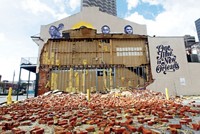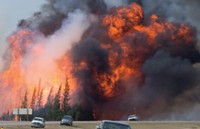Advertisement
Grab your lab coat. Let's get started
Welcome!
Welcome!
Create an account below to get 6 C&EN articles per month, receive newsletters and more - all free.
It seems this is your first time logging in online. Please enter the following information to continue.
As an ACS member you automatically get access to this site. All we need is few more details to create your reading experience.
Not you? Sign in with a different account.
Not you? Sign in with a different account.
ERROR 1
ERROR 1
ERROR 2
ERROR 2
ERROR 2
ERROR 2
ERROR 2
Password and Confirm password must match.
If you have an ACS member number, please enter it here so we can link this account to your membership. (optional)
ERROR 2
ACS values your privacy. By submitting your information, you are gaining access to C&EN and subscribing to our weekly newsletter. We use the information you provide to make your reading experience better, and we will never sell your data to third party members.
Business
Economics Recovery Begins
Energy, raw materials start to flow again as firms restore damaged plants
by Marc Reisch And Vivien Marx
September 12, 2005
| A version of this story appeared in
Volume 83, Issue 37
KATRINA'S AFTERMATH
Two weeks after Hurricane Katrina devastated a vast section of the U.S. Gulf Coast, government authorities and major business concerns continue efforts to relieve the human misery the storm has wrought and to restore the infrastructure of this major energy and petrochemical center.
While the human effects are impossible to quantify, catastrophic risk management experts at Risk Management Solutions says the economic loss from Katrina is expected to exceed $100 billion. RMS attributes half of that amount to losses from wind and coastal surge, infrastructure damage, and indirect economic impacts. The remainder will come from flooding in New Orleans.
According to the government's Minerals Management Service, some offshore oil and gas production has resumed but at levels well below the norm. At press time, 40% of crude oil production of 1.5 million barrels per day had been restored, and 60% of natural gas production of 10 billion cu ft per day was back on-line.
The Energy Information Administration reported last week that some, but not all, refineries had power restored. Major pipelines carrying crude oil and distillates north from the Gulf were back on-line. However, three natural gas processing facilities with a combined capacity of 4 billion cu ft per day were damaged and not yet back on-line.
James A. Osten, a principal with consulting firm Global Insight, says the damage will slow the gathering of natural gas liquids for ethylene production. Natural gas production losses from the Gulf are running double that of Hurricane Ivan last year and will keep the average cost of a million cubic feet at record highs. Companies should "expect $11 gas for the rest of the year," Osten says.
Petrochemical industry consultants at Chemical Market Associates Inc. last week said four refineries in Louisiana and Mississippi representing 5% of North American capacity remained shut down. Seven refineries representing 14% of capacity, however, were running or starting up again. Five ethylene crackers representing 8% of North American capacity were shut down, while another six, also equal to 8% of capacity, were up again.
Chemical plant operators were working to bring facilities back on-line. In Louisiana, Dow Chemical's Plaquemine plant was slowly returning to normal operations, but its St. Charles site was still largely shut down. By prearrangement, Dow had 150 trailers trucked into a camp near the St. Charles site to house employees and their families who had lost homes.
Many firms continued to make cash and product donations to aid stricken communities. Süd Chemie donated a mobile water treatment plant capable of supplying 2,000 L of drinking water per hour. Pharmaceutical firms are donating money as well as medicines, supplies, and nutritional supplements for children and adults.
At Pfizer, for example, Dan Buriak, director and team leader of supply-chain management, is meeting twice daily with a response team to expedite over-the-counter products, anti-infectives, and various medicines for chronic and acute conditions to hurricane victims.
He and his colleagues have just sent off 300,000 units of hand sanitizers to Louisiana for distribution. Sanitizers, antibiotic ointments, and other portable personal care items are crucial in this water-scarce situation, he says.
Buriak says Pfizer is leveraging existing partnerships with Louisiana and Texas hospitals to provide medicines for victims at no cost. "We push the inventory out from the hospital, and we back them up," he says. "That is the quickest way." Basically, he explains, hospitals become distribution sites. "We tell them to send it out, and we will send trucks to replenish you."
Humanitarian Aid
Pharmaceutical companies are contributing money, products, and services to Katrina's victimsCheck here for the latest C&EN stories on the hurricane's impact and ways to help.




Join the conversation
Contact the reporter
Submit a Letter to the Editor for publication
Engage with us on Twitter